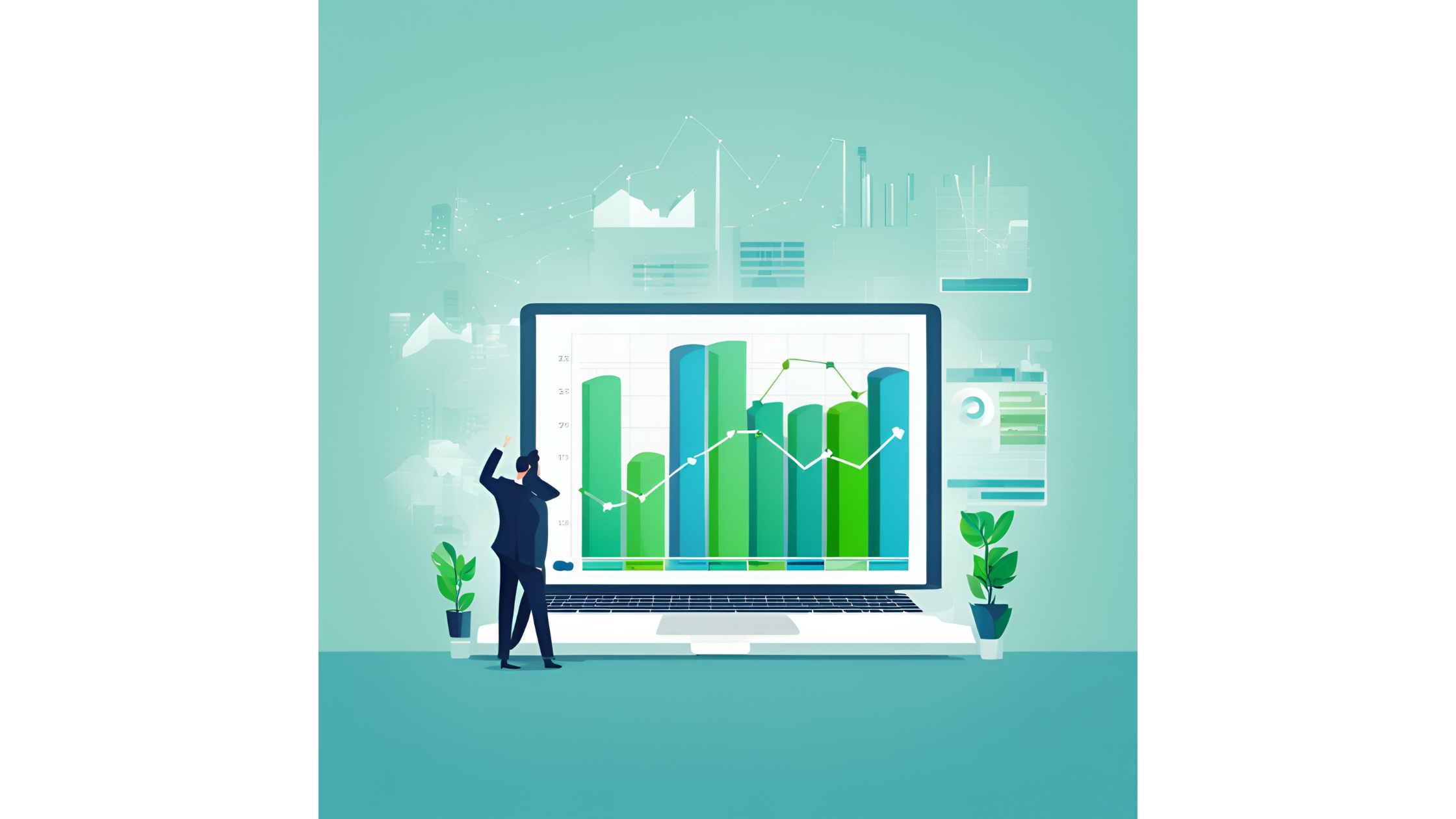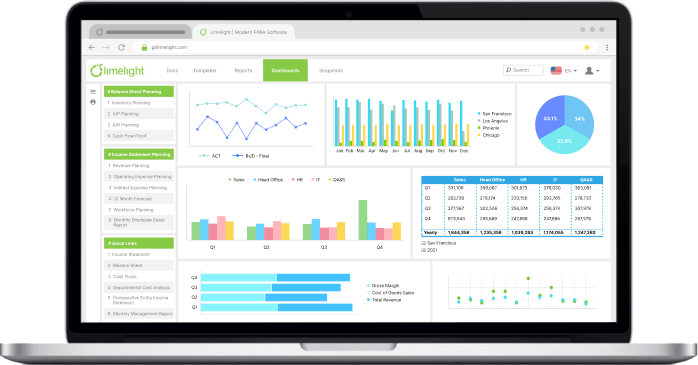Financial forecasting software is making it so that the CFOs of today can accurately project out the financial realities of tomorrow (and tomorrow’s tomorrow). Taking advantage of the best financial forecasting software in today’s market is critical to establishing a strong, data-backed financial future for your organization.
What You Think You Know About Forecasting
Forecasting: It's a word tossed around in boardrooms and financial reports, but what exactly does it mean? Simply put, a forecast is a prediction of future outcomes based on current plans and trends. Businesses use forecasts for a variety of purposes, from budgeting and resource allocation to strategic planning and risk management. Forecasting’s importance is easy to see when you consider that the market size of financial planning software is set to double within the next decade.
But here's the catch: The accuracy of your forecast directly impacts the success of your decisions. Inaccurate forecasts can lead to missed opportunities, wasted resources, and even financial losses. So, how can businesses ensure their forecasts are as close to reality as possible?
The Forecasting Landscape for Businesses
Businesses typically utilize two main types of forecasts:
1. Short-term forecasts: These forecasts cover periods ranging from weeks to months and are used for operational planning and decision-making. Examples include sales forecasts, inventory forecasts, and cash flow forecasts.
-
Sales: How much of your product or service will you sell in the next quarter? This forecast informs inventory management, production planning, and marketing strategies.
-
Inventory: How much stock do you need on hand to meet demand without overstocking or facing stockouts? Accurate inventory forecasts prevent lost sales and unnecessary storage costs.
-
Cash flow: Will you have enough cash to cover upcoming expenses and operational needs? Cash flow forecasts help manage working capital effectively and avoid potential liquidity issues.
2. Long-term forecasts: These forecasts look further ahead, typically 3 to 5 years, and are used for strategic planning and investment decisions. Examples include financial forecasts, market analysis, and product roadmap planning.
-
Financial projections: What are your projected revenue, profit, and cash flow over the next few years? This helps assess financial health, secure funding, and make informed investment decisions. By understanding your projected financial trajectory, you can attract investors, secure loans, and make informed capital allocation decisions.
-
Market forecasts: What are the projected trends in your industry and target market? Understanding market growth, competitor behavior, and customer preferences is crucial for long-term strategic planning. Long-term market analysis allows you to anticipate industry trends, identify emerging opportunities, and adapt your business strategy accordingly.
-
Product roadmap planning: What new products or services should you develop and launch in the coming years? Accurate plans inform product development priorities and resource allocation for future growth. 3 to 5-year forecasts allow you to plan for the future product needs of your customers and ensure you have the resources in place to develop and launch them successfully.
The Benefits of 3-Year and 5-Year Forecasts
Investing in accurate 3-year and 5-year forecasts offers several key benefits:
-
Enhanced decision-making: By providing a clearer picture of your organization's future financial health and market position, long-term forecasts empower you to make more informed and strategic decisions.
-
Improved resource allocation: Accurate forecasts enable you to allocate resources – both financial and human – strategically to support your long-term objectives and maximize returns.
-
Proactive risk management: By anticipating potential challenges and opportunities, long-term forecasts allow you to develop proactive strategies to mitigate risks and capitalize on emerging market opportunities.
-
Increased investor confidence: When you present well-founded and data-driven long-term forecasts, you can inspire greater confidence among investors, making it easier to secure funding for future growth initiatives.
The Challenge of Forecasting
While the importance of accurate forecasts is undeniable, many finance teams struggle with assembling them. Here are some common issues:
Data silos: Data is often scattered across different systems and departments, making it difficult to consolidate and analyze.
Inconsistent data quality: Errors, missing data, and inconsistent definitions can significantly impact the accuracy of your forecast.
Manual processes: Time-consuming manual processes for data collection, analysis, and forecasting can be prone to human error.
Lack of collaboration: Communication gaps between finance and other departments can lead to unrealistic assumptions and inaccurate forecasts.
Management Skepticism
Even when forecasts are meticulously crafted, management teams often lack confidence in their accuracy. This can be due to:
-
Unrealistic expectations: Management might expect perfect forecasts, overlooking the inherent uncertainty of the future.
-
Lack of transparency: If the forecasting process is opaque, it can be difficult for management to understand the assumptions and rationale behind the forecast.
-
Poor communication: Without clear communication of the limitations and uncertainties associated with the forecast, management might misinterpret the results.
Limelight Financial Forecasting Software, the Data Accuracy Gamechanger
Tools like Limelight, modern cloud FP&A software can be a game-changer for businesses seeking to improve data accuracy and enhance their forecasting capabilities. Here's how the best FP&A software platforms tackle these challenges:
Centralized data platform: Limelight consolidates data from disparate sources into a single platform, ensuring consistency and accuracy.
Automated workflows: Limelight automates data collection, analysis, and forecasting tasks, reducing manual errors and saving valuable time.
Collaborative environment: Limelight fosters collaboration between finance and other departments, ensuring all relevant insights are incorporated into the forecast.
Beyond Accuracy: Rolling Forecasts, Scenarios, and Integration Made Easy with Modern Financial Planning Software
Limelight goes beyond simply improving data accuracy to support planning. It empowers businesses with:
-
Rolling forecasts: Continuously update your forecast as new data becomes available, providing a more dynamic and accurate picture of the future.
-
Scenario planning: Explore different "what-if" scenarios to assess the impact of potential changes on your business, allowing for better risk management and strategic decision-making.
-
Integration with actuals: Seamlessly compare your plan to actual results, allowing you to track progress, identify deviations, and continuously improve accuracy.
Getting Started with Data-Driven Forecasting
Ready to unlock the power of accurate forecasting for your business? Here's how you can get started:
Evaluate forecasting platforms: Explore Limelight and other forecasting tools to find the best fit for your needs and budget.
Request a demo: Most platforms offer live demos, allowing you to experience the tool firsthand and ask questions.
Pilot the chosen platform: Start with a small pilot project to test the platform's functionality and ensure a smooth implementation.
Train your team: Provide your team with proper training to fully utilize the platform's features and capabilities.
Remember: Data accuracy is the cornerstone of effective forecasting. By investing in cloud FP&A tools like Limelight and adopting data-driven practices, you can build stronger plans and navigate the future with greater confidence.
Financial Planning Software FAQ
What are software solutions in financial planning?
Software solutions in financial planning are digital tools designed to help finance teams manage, forecast, and analyze financial data, streamlining the planning process and providing real-time insights.
How does scenario modeling benefit financial planning?
Scenario modeling allows finance teams to create multiple financial scenarios based on different assumptions, helping them understand potential outcomes and prepare for various financial situations.
How do financial planning tools aid in the planning process?
Financial planning tools automate data collection, analysis, and reporting, improving efficiency and accuracy in the planning process, including cash flow planning and scenario modeling.
What are the benefits of using real-time financial data?
Real-time financial data ensures current and accurate information, leading to precise forecasting, timely decision-making, and the ability to adapt to changing conditions.
What are forecasting software tools?
Forecasting software tools are applications that assist in predicting future financial performance, enabling finance teams to perform scenario planning and cash flow-based forecasting for better financial management.





.png?width=381&height=235&name=linkedinreal%20(27).png)
